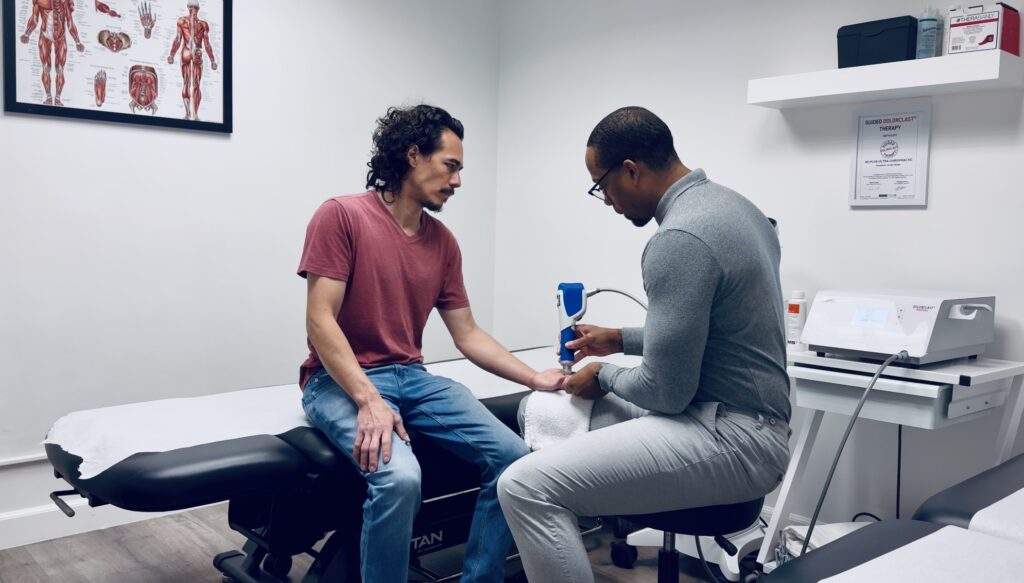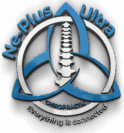Chiropractic Pain Management
Effective PAIN MANAGEMENT Solutions for
Chronic and Acute Pain
Introduction to Pain Management
At Ne-Plus Ultra Chiropractic in Pasadena, California, we understand that pain can significantly impact your quality of life, limiting your ability to work, enjoy recreational activities, and even perform simple daily tasks. Our comprehensive pain management services focus on identifying the underlying causes of your pain rather than merely masking symptoms with medication.
Dr. Lamar Baddley, a licensed chiropractor in both California and Florida with advanced training in pain management techniques, brings his expertise and compassionate approach to every patient. With a degree in Exercise Science from California State University, Northridge, and a Doctorate in Chiropractic from Southern California University of Health Sciences, Dr. Baddley has the knowledge and skills to address a wide range of pain conditions effectively.
Our pain management approach is grounded in the biopsychosocial model, as recommended by leading health organizations, including the Agency for Healthcare Research and Quality and the National Pain Strategy Report. This holistic perspective recognizes that pain is influenced by biological, psychological, and social factors, allowing us to develop more effective and personalized treatment strategies.

Detailed Explanation of
Pain Management Treatment Procedures
Comprehensive Pain Assessment
Before developing your personalized pain management plan, Dr. Baddley conducts a thorough evaluation that includes:
-
Detailed pain history assessment (location, intensity, duration, aggravating and relieving factors)
-
Comprehensive physical examination focusing on movement patterns and functional limitations
-
Neurological and orthopedic testing
-
Postural and gait analysis
-
Review of previous treatments and their effectiveness
-
Assessment of how pain impacts your daily activities and quality of life
This multidimensional assessment allows us to identify the root causes of your pain and develop a targeted treatment approach.
Specialized Manual Therapy Techniques
-
Joint Mobilization and Manipulation
Gentle, controlled movements to improve joint mobility and reduce pain
-
Soft Tissue Therapy
ncluding myofascial release, trigger point therapy, and instrument - assisted soft tissue mobilization to address muscle tension and fascial restrictions
-
Neuromuscular Re-education
Techniques to improve muscle function and coordination, reducing strain on painful structures
-
Functional Movement Therapy
Addressing movement patterns that contribute to pain and dysfunction
Therapeutic Modalities
-
Therapeutic Ultrasound
sound waves to generate deep heat in tissues, promoting healing and reducing pain
-
Electrical Stimulation
including TENS (Transcutaneous Electrical Nerve Stimulation) and Interferential current to reduce pain signals and promote tissue healing
-
Therapeutic Exercise
customized exercise programs designed to strengthen the supporting muscles, improve flexibility, and enhance function.
-
Heat and Cold Therapy
Strategic application of thermal modalities to reduce inflammation, muscle spasm, and pain
Integrative Pain Management Strategies
-
Lifestyle Modification Counseling
Guidance on ergonomics, sleep positioning, and activity modification to reduce pain triggers
-
Nutritional Guidance
Recommendations for anti-inflammatory diets and supplements That may help reduce pain and inflammation
-
Stress Management Techniques
Tools to address the psychological aspects of chronic pain, including relaxation techniques and mindfulness practices
-
Patient Education
empowering you with knowledge about your condition and self-management strategies
Benefits and Expected Outcomes
Our comprehensive pain management services offer numerous benefits:
Effective Pain Relief
-
Reduction in both acute and chronic pain intensity
-
Decreased frequency and duration of pain episodes
-
Diminished need for pain medications
-
Relief from radiating pain and associated symptoms
Improved Function and Mobility
-
Enhanced ability to perform daily activities
-
Increased range of motion and flexibility
-
Improved strength and endurance
-
Better coordination and balance
Long - term Management Strategies
-
Development of self - management skills for ongoing pain control
-
Identification and modification of pain triggers
-
Strategies to prevent pain recurrence
-
Tools to manage flare-ups effectively
Enhanced Quality of Life
-
Improved sleep quality
-
Reduced anxiety and stress related to pain
-
Increased ability to participate in social and recreational activities
-
Greater overall sense of well - being and life satisfaction
Conditions We Treat
At Ne-Plus Ultra Chiropractic’s pain management services address a wide range of conditions:
-
Neck Pain
From poor posture, tech neck, whiplash, or degenerative changes
-
Back Pain
including lower back pain, mid-back pain and pain related to disc issues
-
Shoulder Pain
Rotator cuff issues, frozen shoulder, and impingement syndromes
-
Knee Pain
Osteoarthritis, patellofemoral pain, and ligament strains
-
Sciatica
Pain, numbness, or tingling radiating down the leg
-
Sports Injuries
Including sprains, strains, and overuse injuries
-
Auto and Personal Injuries
Whiplash and other trauma - related pain
-
Headaches and Migraines
Tension headaches, cervicogenic headaches, and migraine management
-
Arthritis Pain
Osteoarthritis and inflammatory arthritis pain management
-
Work - Related Injuries
Repetitive strain injuries and ergonomic - related pain
FAQs
Common FAQs About Pain Management
How is chiropractic pain management different from just taking pain medication?
Chiropractic pain management addresses the underlying causes of pain rather than simply masking symptoms. While pain medications can provide temporary relief, they don’t correct the biomechanical issues, muscle imbalances, or joint restrictions that often cause pain. Our approach aims to create lasting improvements by restoring proper function and teaching self-management strategies, reducing your dependence on medications and their potential side effects.
How long will it take to experience pain relief?
Many patients report some degree of relief after their first treatment, but the timeline for significant improvement varies based on several factors:
- The nature and duration of your condition
- The severity of your pain
- Your consistency in implementing recommendations
- Your adherence to recommended home care and exercises
During your initial consultation, Dr. Baddley will provide a more specific timeline based on your individual situation and develop a treatment plan with clear milestones and expectations.
Will I need ongoing pain management treatments indefinitely?
Our goal is to help you achieve independence in managing your pain, not to create dependency on treatments. Your pain management plan will typically progress through several phases:
- Intensive Care Phase: More frequent visits focused on reducing pain and improving function
- Rehabilitative Phase: Less frequent visits emphasizing strengthening and stabilization
- Maintenance Phase: Periodic check-ups to maintain gains and prevent recurrence
Many patients find that once their pain is under control, they can maintain their improvements with self-care strategies and occasional “tune-up” visits
Can chiropractic pain management help if I've already tried other treatments without success?
Yes, many of our patients come to us after trying other approaches without satisfactory results.
Our comprehensive assessment often identifies contributing factors that may have been
overlooked, and our multifaceted approach addresses pain from multiple angles. Even if you’ve had limited success with other treatments, including previous chiropractic care, our specialized approach may provide the relief you seek.
Don’t let pain control your life any longer. Experience the difference personalized,
evidence-based pain management can make at Ne-Plus Ultra Chiropractic. Dr. Lamar Baddley and our caring team are committed to helping you achieve lasting pain relief and return to the activities you love.
Clinic Locations
House calls by appointment
- South Pasadena, CA
- San Marino CA
- Altadena CA
- Alhambra CA
- San Gabriel CA
- La Canada Flintridge, CA
- Sierra Madre CA
- Temple City, CA
- Monterey Park, CA
- Rosemead, CA
- Arcadia CA
- Glendale, CA
- Monrovia CA
- El Monte CA
- South El Monte CA
